Zoning for zero: a critical realist analysis of urban planning for carbon-neutral cities
Abstract
Urban planning has long relied on traditional zoning documents that primarily designate development rights based on land use types. The indirect environmental impacts of development are typically assessed through separate Environmental Impact Assessment (EIA) commissions, which lack legal authority, while official zoning plans carry binding legal power. This division creates a disconnect between the impacts identified in EIAs (intended to be avoided) and the impacts facilitated by zoning plans (designed to be achieved). The legal authority of zoning plans often outweighs the procedural influence of EIAs. In this study, we explore whether exchanging the thematic roles of zoning and EIAs could yield better results. To investigate this, we conceptualize a transformative approach by reassigning the traditional designations in an existing zoning plan to focus instead on climate impact-oriented categories and apply this approach to a real-world case study. Using a Critical Realist analytical framework, we compare the potential impacts of this climate-centric zoning concept with those of traditional zoning. Our findings reveal extensive societal linkages embedded in what appear to be purely technical zoning decisions. We demonstrate how reimagined zoning, informed by contemporary climate impact knowledge, can drive significant systemic change in urban development - surpassing the influence of isolated strategies, policy guidelines, or EIAs, and addressing environmental effects that often fall outside the scope of conventional EIA processes.
Keywords
INTRODUCTION
Many established global cities have recognized the profound impact urban areas have on climate change. In response, numerous cities have recently joined various low-carbon initiatives (e.g., C40, ICLEI, CNCA, NetZeroCities, EU missions). These networks provide opportunities for cities to exchange strategies and best practices. However, they often overlook critical issues that fall outside the scope of strategic discourse. One such issue is the routine practice of urban planning. While many urban planners recognize a significant gap between the goals outlined in climate strategies and those pursued in actual planning, this disconnect is frequently ignored in both strategic discussions and planning documents. The resulting shortcomings in practice have been noted by planning theorists[1-3] and documented in a growing, though still limited, number of case studies[4-8]. In addition, several scholars have emphasized the need to reconsider the role of urban planning, especially the implications of the compact city model it often advocates, before the next Intergovernmental Panel on Climate Change (IPCC) Special Report on Cities[9]. In this article, we aim to explore how urban planning can be reimagined to address the persistent gap between climate strategies and actual planning.
Urban planning, as a form of public intervention, has undergone significant theoretical evolution since its inception. Initially, planners sought to reduce urban density, viewing the compact metropolises of the late 19th century as problematic. Theories advocating openness and decentralization were developed to address the challenges of urban growth[10-12]. However, in recent decades, a dramatic reversal has occurred. Driven by a blend of social, economic, and environmental objectives, the opposition to urban sprawl has become a central tenet of sustainable urban planning[13]. By the early 2000s, this anti-sprawl perspective gained strong support from advocates of real estate development and urban economics. At the dawn of the 21st century, urban density was widely celebrated for its perceived environmental and economic efficiencies - such as reduced transportation emissions, improved infrastructure, and more sustainable lifestyles[14]. However, current realities challenge this optimistic view. Cities occupy less than 1% of Earth's land surface[15] yet are responsible for the majority of global emissions[16], with industrial activities - not land use - accounting for 90% of these emissions[17]. This suggests that urban density alone is unlikely to solve sustainability challenges or lead to meaningful social improvements[8]. In fact, the emissions stem primarily from the infrastructure and lifestyles facilitated by compact urban development. If developing countries follow current planning paradigms and achieve infrastructure levels comparable to those in developed nations, the construction of future infrastructure and buildings alone could consume up to 60% of the remaining CO2 budget (with a 50% probability) for limiting global warming to 2 °C[18,19]. Moreover, the estimated need for two billion new homes by the end of the century[20] - if pursued using conventional development models - could contribute hundreds of gigatons of CO2 to the atmosphere.
Additionally, carbon lock-in (where planning decisions compel people to adopt carbon-intensive lifestyles) is projected to account for up to 30% more in future emissions[21]. Compounding the issue, leading urban economists frequently advocate for designing cities to support consumer-driven economies[22-26], potentially resulting in higher global emissions despite the theoretical benefits of density - and possibly even exceeding the emissions of less urbanized areas[27-32]. These findings suggest a pressing need to critically re-examine the theoretical foundations of current planning practices. A new approach is required - one that transcends the reinforcement of compact development (a trend that naturally occurs as cities grow[29]) and instead harnesses planning's role as a public authority to drive systemic sustainability transitions.
While contemporary planning has embraced the compact city ideal, environmental impact assessments (EIAs) have also evolved into a significant and specialized sector. Both public agencies and private developers invest considerable resources in EIAs during the planning process. In academia, numerous studies are published annually to enhance the precision of these assessments, often leveraging advanced machine learning technologies[33]. However, despite the increasing sophistication of these methods, their practical influence on planning and emissions remains limited - especially when EIAs are commissioned separately and treated as external to core planning processes. This fragmentation often sidelines EIA findings, reducing their impact on actual outcomes[4,34]. Furthermore, EIAs typically fail to account for the global emissions driven by the lifestyles that urban development enables. These broader impacts could be better integrated through hybrid methodologies that combine territorial and consumption-based assessments[35].
In parallel, widely adopted sustainability certifications (e.g., LEED, BREEAM) are often expensive and limited in scope, raising questions about their effectiveness in reducing climate impacts[36]. Similarly, established life cycle assessment (LCA) methods rarely account for the indirect impacts of land use or the global material and energy flows required to sustain urban areas - factors that EIAs often neglect as well[35].
Due to these systemic constraints, impact assessments primarily influence planning through legal appeals concerning localized impacts or by recommending technical fixes - such as energy efficiency improvements - at the building level. In contrast, zoning plans, which hold direct legal authority, can generate far-reaching effects. Yet these effects often contradict the findings of EIAs and LCAs. As a result, climate strategies remain unfulfilled in planning practice, which ultimately continues to facilitate development[4,30]. The fact that zoning plans can override complex, multidisciplinary EIA documents with just a few zoning notations highlights the fundamentally reductive, yet powerful, nature of planning. This causal power is often underappreciated in both practice and academic research in urban planning[37].
In this paper, we begin by illustrating how the failure to meet sustainability goals stems from the dualistic nature of human culture. We then argue that this dualism can be pragmatically overcome by redefining the themes embedded in zoning plans. This literature-based argument leads us to our research question: Is it realistic and impactful to directly align zoning plans with climate mitigation goals by assigning legal limits to climate impacts, while redirecting non-binding impact assessments to address traditional zoning concerns such as land-use types and development rights? To address this question, we developed a model called “Climate Zoning” and applied it to a real-world case study on the Aalto University campus in the Otaniemi neighborhood of Espoo, Finland. We then compared its outcomes with those of existing zoning designations in the same area. Methodologically, we employed a Critical Realist framework to evaluate both direct and indirect impacts across different levels of reality[38]. Based on our analysis, we argue that zoning designations can be easily adapted for climate mitigation purposes, and that a practical yet profound shift in planning paradigms could drive systemic change in the construction industry and urban development - far beyond the reach of isolated strategies, policies, and assessments.
THEORETICAL BACKGROUND
Divergent goals in planning and environmental impact assessment originate from the longstanding conceptual opposition between human culture and nature. Finnish urban ecologist Yrjö Haila has described how solving many sustainability issues in planning practice is challenging due to the deep historical roots of this nature-culture dualism[39,40]. In this framework, nature is treated as an external object (the environment), while humans are seen as subjects acting upon it. From an anthropological perspective, this dichotomy is understandable, as nature has historically been used to fulfill human needs (as reflected in the term “land use”). Another, perhaps even more critical, basis for this opposition lies in the cultural identity of humans. According to Haila, cultural identity has long been constructed in contrast to the “otherness” of nature, which has also influenced the development of scientific paradigms[40]. This legacy persists today, even within academic structures. For example, environmentalists often refer to nature as “the environment”, while transportation engineers and architects refer to the “built environment” as distinct from it. An important question is whether this inherited dualism continues to influence current climate research. Much of the discourse appears to frame climate in terms of the limits it imposes on human activity, such as the 2.0 °C warming threshold or the remaining carbon budget. Haila argues that this framing, which portrays nature as a constraint on human existence, originated in the post-conquest period of the late 18th century. It led to the claim that food production is a limiting factor for human life, based on the assumption that nature - initially local, later global - cannot support unchecked population growth. Haila challenges this view as fundamentally flawed, arguing that it reflects dualistic thinking that artificially separates the “natural” space used for food production from other societal functions. In modern cities, these other land uses dominate and thereby impose artificial limits on food production[40]. Today, the separation of nature from the built environment, whether for preserving carbon sinks or protecting biodiversity within designated areas, appears to be a default assumption in land-use planning.
This dualism has shaped public urban planning since the profession's emergence in the late 19th century. In Western planning literature, the profession’s founding figure is often identified as biologist Patrick Geddes. Active in British academia following the era of Charles Darwin, Geddes applied evolutionary theory to problems of urban growth[10]. These theories were used to conceptualize urban form, particularly the built environment, as a physical object to be shaped within nature. According to Valsson[41], the treatment of nature in urban planning has evolved through three successive periods of tension: In the integration era, the buildings and roads were designed to harmonize with the landscape, respecting topography, vegetation, and natural elements. In the alienation era, this approach gave way to modernist planning, which physically and conceptually separated buildings and planted greenery from the surrounding natural environment. The reconnection era began in the 1980s with the rise of ecological awareness and the renewed effort to integrate built and unbuilt environments in pursuit of a more balanced urban-nature relationship[41,42]. However, this perspective has remained narrow, largely excluding the broader global impacts of cities that are outsourced beyond their immediate boundaries[17,43]. This limited view continues into the 21st century. After the millennium, the concept of sustainability experienced a kind of regression, resembling the alienation seen in the 1960s - now revived through the compact city ideal. While once focused on specific zones, the compact city paradigm has been broadly operationalized through citywide land-use densification strategies. Within this model, high gross floor area (GFA) values are often justified by presumed sustainability benefits. These claims often rely on false assumptions about causality between urban service development and traffic modes[44]. Such misbeliefs are supported by a radically dualistic idea: that densifying cities inherently preserves nature. This notion is widely promoted by land-use authorities and professionals[45-48]. Additionally, complex and often misleading methods for measuring urban density further support this view, producing outcomes that can misguide political decision making[49].
The two-decade dominance of dense city ideals has recently been met with an increasing number of studies questioning their sustainability[50]. These findings, further supported by advances in urban analytics, have begun to shift the balance in the opposite direction. The recent turn in the nature-city debate is largely driven by the growing focus of natural sciences on climate change and biodiversity. Concepts such as planetary well-being and ecosystem services reflect this shift, aiming to promote a more holistic and less dualistic understanding of the environment. In particular, the concept of ecosystem services has been developed to inform urban planning by providing scientifically grounded guidelines for land use[51]. It highlights the deep interdependence between human well-being and the health and functioning of ecosystems. This interconnection extends beyond basic necessities like food and water to include so-called “cultural services” such as recreation[51,52]. The inclusion of cultural services is especially important in urban planning, where land-use decisions often reflect broader societal values and cultural priorities[51]. Traditionally, the tension in the nature-city relationship has centered on a dichotomy between the intrinsic value of nature and its instrumental value for human benefit - particularly for mental and physical well-being. The ecosystem services framework helps to reconcile these conflicting views by integrating intrinsic values into a system of instrumental benefits. As ecosystem services greatly depend on non-built land uses, their instrumental counterpartner is often represented by zoning designations that favor build-up areas. However, when planning decisions prioritize only instrumental values - especially those that are easy to quantify and monetize - less tangible or indirect benefits risk being overlooked.
Another latent dualism within the ecosystem services concept stems from the language used, which casts nature as a “service provider.” While the framework advocates integrating nature into urban areas, it often does so through the lens of human needs and desires. This focus is particularly evident in the emphasis on the "services" and "benefits" ecosystems provide, which can unintentionally reinforce the idea of nature as separate from and subordinate to human interests. Such utilitarian framing may obscure or diminish the recognition of nature’s intrinsic and socio-cultural values, including its artistic, conservation, and climate significance.
These perspectives reveal that dualistic thinking remains deeply entrenched in urban planning. According to Haila, such dualism is detrimental to ecological outcomes and should be avoided at all levels of planning. In line with Haila’s thinking, urban planning and research should incorporate “alien” elements - perspectives from outside the discipline - to genuinely overcome this dualism and generate novel solutions that would not emerge otherwise[40]. This non-dualistic perspective has gained traction in 21st-century urban practice. The dominant paradigm of compact city development, often achieved at the expense of local green spaces, is rooted in a dualistic assumption: that urban development and nature conservation are inherently at odds. Under this view, cities are seen as degrading to ecosystems, while nature is best preserved by minimizing urbanization[53,54]. However, recent theoretical developments challenge this dichotomy, advocating for urban design approaches that simultaneously promote both urban development and the enhancement of ecosystem services[55-57].
METHOD
We employ a case study approach that combines existing real-world data with hypothetical experimental information, crafted specifically for this case using a “Haila-ist” model based on the ideology of Yrjö Haila, as previously outlined. This combination of empirical information about a specific site and speculative future scenarios is common in urban planning assessments. However, rather than evaluating “the plan” as a concrete solution for a specific site, our focus is on examining the differences in the impacts of the experimental designations proposed within those plans. This necessitates a methodologically pluralistic approach.
Our rationale is grounded in critical realist philosophy, particularly the methodological arguments of Bent Flyvbjerg and Robert Isaksen[58,59]. Flyvbjerg contends that case studies are not merely descriptive or context-bound, but play a crucial role in theory development and falsification[58]. He emphasizes the value of critical case building in exploring or challenging dominant assumptions. Specifically, he advocates for using case studies as thought experiments - tools capable of revealing complex mechanisms where empirical generalization is limited. In this study, we apply a hypothetical zoning model to an actual location as a counterfactual thought experiment, aiming to expose the limitations of traditional regulatory practices and to explore the explanatory potential of an experimental, climate-oriented alternative.
Complementing Flyvbjerg’s defense of case study methodology, Robert Isaksen argues against an overreliance on empirical data, advocating instead for theory-led methodological pluralism, especially when the research aims for explanatory depth and causal plausibility in the spirit of critical realism[59]. Following this logic, our case study is explicitly focused on uncovering generative mechanisms through the critical realism framework of “reality domains”[38]. This framework provides a comparative analytical lens for integrating the diverse scales and logics of professional practice - from financial and regulatory mechanisms that shape real estate development, to the design-oriented actions of architects, and the normative assessments of urban planners. This approach enables a nuanced analysis of how experimental zoning designations may influence climate mitigation goals, providing insight into our complex research question. This kind of methodological pluralism and transdisciplinary approach is particularly important when analyzing climate change-related impacts, which emerge from the interplay of multiple domains[1].
THEORETICAL MODEL
To implement the “Haila-ist” approach as a new zoning model, there is no need to change the planning system itself or redirect the existing causal power of planning for climate mitigation. In Haila´s terms, we can simply revise traditional designations to their “alien opposite” elements. The elements here refer to contemporary zoning designations (zones) commonly used worldwide[11]. What makes these elements “alien” to the traditional approach is that their designations are reconceptualized for climate change mitigation, drawing on knowledge from disciplines that are typically siloed in EIAs or excluded entirely (e.g., indirect emissions beyond the EIA scope). We refer to this reinterpretation as the Climate Zoning (CZ) model.
We selected zoning elements that are both general and impactful in terms of climate change mitigation and no-net-loss biodiversity goals. These include: plots for buildings, open spaces for soil/vegetation, and land uses for traffic infrastructure. Each of these elements contributes significantly to the ecological burden, but also has the potential for ecological benefits, including an increased carbon handprint (i.e., a positive contribution to reducing carbon emissions)[21,60-62]. From a planning perspective, these are the primary physical features designed and designated through the planning process, unlike many urban services that are often realized through private actors rather than planning instruments. It is also important to clarify that the "model" presented here differs from traditional design models commonly found in urban planning literature. Most 20th-century urban planning theories were conceived as design models or land-use diagrams, though often influenced by economic and social sciences[63,64]. By contrast, the model constructed here is a model of practice, not of design determinism. It follows the ethos of architectural theory, leaving room for practical creativity while retaining the causal power of planning.
The model is constructed by inverting the primary use of selected planning elements, assigning them an “opposite use” compared to traditional zoning. Under this inversion, the new primary use of these elements is to meet global climate goals and sustain local ecosystem services. Secondary uses refer to aspects important for local human needs, such as cultural ecosystem services. Impact assessments are conducted for secondary uses, while the legal causal power of the plan is directed toward the primary use. Planning metrics are adjusted accordingly to measure the performance of these new primary uses. Table 1 summarizes the setup.
Primary and secondary uses of key urban design elements in the model
| Element | Primary use | Secondary use | Performance metrics |
| Plots for buildings | Land for construction and carbon sinks/storage, including stormwater management systems | Human facilities (housing, workplaces, amenities) | Area-based carbon sequestration/storage capacity |
| Unbuilt areas | Soil, vegetation, and/or forestry as carbon sinks; biodiversity goals (e.g., Biodiversity Net Gain, BNG) | Nature conservation, recreation, noise protection, and microclimatic buffering | Carbon sequestration/storage (CO2e/m2); BNG index |
| Facility land-use (e.g., streets, roads, parking lots, squares) | Infrastructure surfaces designed to reduce radiative forcing and purify stormwater | Mobility and social interaction spaces | Radiative cooling impact (W/m2) |
Plots for buildings
This element includes detailed zoning designations for building construction, regardless of use type. It incorporates existing stormwater management practices but reframes them with a focus on climate mitigation through soil, vegetation, and construction-based interventions. Several natural and technological carbon capture methods are already available to support and measure this function[65-67]. Both large-scale master plans and detailed plot-level plans can set limits on maximum allowable emissions or establish minimum required in-situ carbon capture. The metric CO2e/m2 (carbon dioxide equivalent per square meter) is used to assess the total greenhouse gas emissions associated with buildings or land use.
Citywide carbon limits embedded in planning documents can reflect a municipality's climate ambitions, which in turn may be influenced at the national level. The model emphasizes long-term carbon storage via carbon-storing materials over short-term material circulation. The concept of “design for disassembly” is viewed here as a cultural disservice and material waste, accepted only in limited cases for historical preservation or reuse. Zoning in greenfield areas can also include limits for construction phases, taking into account local ecosystems and soil conditions. The mitigation potential of undisturbed soil and vegetation is difficult to replicate once altered[61,68]. Therefore, areas with high mitigation goals often require larger plot sizes, which in turn offer opportunities for on-site energy production, reduce energy consumption, and support low-carbon off-grid solutions and related R&D.
Unbuilt areas
This category includes existing and newly planted urban green spaces. Planning figures are used to set minimum levels for carbon sequestration, storage, and biodiversity targets. Depending on the local context, the emphasis can shift between biodiversity and carbon capture. As with plots for buildings, the minimum requirements for unbuilt areas are defined by relevant authorities.
Facility land use
This category includes all other types of land use not covered above, such as streets, rail lines, parking lots, squares, playgrounds, sports fields, and other constructed recreational areas. While national-level road infrastructure may be governed by separate regulations, minimum thresholds for radiative forcing can still be established for different types of facilities by relevant authorities. Though some climate-adaptive surface materials already exist[66], R&D into advanced, climate-friendly infrastructure should be prioritized and supported by transportation authorities committed to strong climate mitigation efforts.
PRACTICAL CASE
To assess the model's impacts, we applied it to a case study site in Finland. The selected location is a university campus block within the Aalto University area, situated in the Otaniemi neighborhood of Espoo, Finland. This area is undergoing significant development. Originally established as a low-density suburban campus in the 1950s, the district has recently become more accessible due to the addition of a metro line. As a result, its large plots are increasingly viewed as valuable assets for infill development from a contemporary urban planning perspective. The specific block chosen for this study is adjacent to a metro station and is considered a potential target for infill construction from a developer’s point of view.
However, development of the case block is restricted by existing zoning designations, which were ratified more than 20 years ago. The zoning context is shown in Figure 1, and the designations are explained in Table 2.
Figure 1. Existing zoning plan[69] of the case block, indicating designated land uses: educational buildings (YO) with a gross floor area (GFA) limit of 17,000 m2, parking areas (p), a public green corridor (vi), and a biking route (pp). Dashed-dot lines indicate the permitted building boundaries. Small arrows pointing toward the dashed-dot line specify the boundary to which construction must connect. The dotted hatch marks areas to be planted.
Current zoning designations in the case block
| Primary designation | Rules for designation | Explanation |
| YO | IV 17000 | Area for educational buildings (YO). The maximum building height is four floors (IV), with a total GFA of 17,000 m2 |
| p | Area designated for car parking | |
| pp | Public pedestrian and cycling route | |
| vi | Area for a public green corridor | |
| w | Area to be preserved as wetland |
For comparison, a plan revision using traditional zoning designations is shown in Figure 2 and explained in Table 3. While this revision retains the traditional planning logic, it has limited capacity to meet climate mitigation and biodiversity goals. This is illustrated by the addition of a green corridor (VL-1) under its primary designation, alongside an increase in the building rights for new plots (KL). The green corridor designation is intended to give the area stronger legal protection, ensuring its continued existence in the future. A similar feature is incorporated into the Climate Zoning model, as the main goal of this comparison is to evaluate the environmental sustainability of the zoning logic.
Figure 2. Hypothetical zoning plan revision using traditional designations (based on local zoning practices in Finland).
Zoning designations in the traditional revision [Figure 2]
| Primary designation | Rules for designation | Explanation |
| YO | 1,7000 IV | Educational buildings (YO) with four floors (IV) and a GFA of 17,000 m2 |
| p | Area designated for car parking | |
| KL | 20000 X | Area for retail and office buildings with a GFA of 20 000 m2 and up to ten floors (X) |
| grid hatch | Public open space for a square | |
| VL | -1 | Public green corridor. The suffix "-1" denotes a rule requiring the preservation of wetland ecosystems |
| pp | Public pedestrian and cycling route |
As noted in the introduction, the architectural and urban design illustrations presented here are hypothetical and outside the scope of the analytical focus. Nonetheless, the case study was structured to reflect significant development potential - measured as increased GFA rights - to evaluate Climate Zoning within a realistic planning revision scenario. Figure 3 shows the zoning map under Climate Zoning, while Table 4 explains the logic behind the new zoning designations. Figure 4 provides a visual representation of the resulting development scenario. The illustrated building volumes slightly exceed the specified height limits (denoted as Roman numerals) in the plan. This deviation was intentionally included to reflect a more realistic case, as minor exceptions to detailed zoning plans are common during the building permit phase[70].
Figure 4. Visual representation of the case block. The red dashed line indicates the area of the hypothetical development proposed in the revised plan.
Climate zoning designations applied to the case study
| Primary designation | Rules for designation | Explanation |
| BU (Building plots) | sq-XX/st-XX | “XX” indicates the minimum annual carbon sequestration (sq) or life-cycle carbon storage (st) in CO2 equivalent per GFA (CO2e/GFA) |
| fc-1 | Sub-zone within BU designated for facilities Minimum radiative cooling impact standards can be applied here, similar to FC zones | |
| UN (Unbuilt areas) | BNG-15 | Minimum biodiversity net gain (BNG) measured using a standardized index |
| pp | Traditional local designations may be integrated into any zone | |
| FC (Facility land use) | rf 0.5 | Radiative forcing cooling efficiency of the facility, measured as a percentage of albedo reflectivity per square meter |
COMPARATIVE ANALYSIS
To assess the impacts and realism of the Climate Zoning model, we adopt an analytical framework grounded in critical realism (CR), applying its three ontological domains - empirical, actual, and real[38] - as outlined in Table 5. The CR framework enables us to examine both the direct and indirect impacts of climate zoning, considering their varying probabilities and potentials in a comparative context. As the analysis is forward-looking, it aims to propose informed hypotheses regarding the likely effects of climate zoning notations. By comparing these notations with those of traditional zoning systems, we anchor our hypotheses in observable realities, while also establishing a critical perspective on the current state of urban planning.
Comparative CR analysis
| Domain | Traditional zoning | Climate zoning |
| Empirical | - Measurable, restricted physical development metrics (e.g., GFA as building rights) - Unpredictable and unmeasurable climate impacts (outside the scope of zoning) | - Unrestricted architectural volumes - Uncontrolled cityscape impacts - Predictable climate impacts (regulated via zoning designations) |
| Actual | - Established real estate development practices prevail - Conventional economic valuation models apply - Supports traditional construction industry methods | - Necessitates new valuation paradigms aligned with designated climate impact levels and the absence of predefined GFA rights - Requires new consultancy expertise to calculate compliance with zoning designations - Demands R&D to enhance construction industry capacity and align with new valuation expectations |
| Real | - Reinforces the existing capital-based real estate economy and its valuation logic - Preserves current power structures and economic relationships | - Challenges traditional urban economic models, especially those related to financial markets and valuation logic - Promotes the emergence of new socio-ecological governance paradigms, expanding the role of planners) |
The empirical domain focuses on observable events produced by the plan (e.g., mathematically measurable building height or shadow projection). The actual domain addresses the underlying processes driving those empirical events (e.g., market responses to facility use or shifts in local democratic practices resulting from new housing types). The real domain delves deeper, examining structural causes behind these processes - such as systemic changes, institutional inertia, organizational learning, or evolving best-practice guidelines - that ultimately produce the empirical outcomes. These can also include broader socio-technical developments within the real estate industry.
Many scholars emphasize the urgent need for systemic transformation to address the severe climate impacts of current urban development practices. Accordingly, we reflect on the CR analysis through three key lenses of urban planning practice: institutional transformation, technological innovation, and real estate valuation. The role of institutions (both public and private) and the technological innovations embedded in their practices is central to achieving sustainable systemic change. Institutions often operate within dominant technological paradigms that define their regimes (e.g., using transportation forecasting models to inform land-use plans, road infrastructure, and parking supply). These regimes often align with co-institutions and commissioning bodies, collectively striving for universal planning paradigms[71]. Conversely, changes in practical planning tools, such as zoning plans, can trigger multi-level societal transformations. A particularly illustrative example is the potential impact on real estate valuation practices. Valuation paradigms not only shape what is considered feasible for implementation but also underpin the global capital economy, which treats cities as real estate assets. The CR analysis highlights how a seemingly technical planning instrument - like a zoning plan - can have far-reaching societal consequences. To shift the focus from this global scope to more practical, policy-relevant insights, we have summarized the key transformative themes in Table 6.
Comparative summary of transformation potential
| Category | Traditional zoning [Figure 2] | Climate zoning [Figure 3] |
| Institutional transformation | Minimal transformative potential; maintains existing institutional structures (e.g., required documentation for planning evaluations) | High transformative potential; necessitates new institutional capacities for climate impact assessments and performance measurements. May foster new models of environmental governance beyond the scope of urban planning |
| Technological innovation | Incremental innovation; minimal pressure for R&D | Drives radical innovation in building design, construction materials, consultancy services required to meet designated climate impact targets |
| Real estate valuation | Reinforces the dominance of existing valuation logic and economic power structures | Encourages new valuation approaches, as building rights are no longer predefined. Return on investment must now be calculated based on compliance with climate impact requirements |
DISCUSSION
Zoning is often criticized for its reductiveness as a planning instrument. However, this study demonstrates that the very same reductiveness can be effectively leveraged to address critical global issues that are typically handled separately through impact assessments or guided semantically in policy guidelines and strategies. A key insight is that, from the perspectives of zoning tradition, legislation, and institutional management, the paradigm shift proposed here - referred to as Climate Zoning - is technically minor but radical in its potential for climate-positive outcomes. This shift requires a fundamental rethinking of the theory and philosophy behind urban planning, aiming to make it more ethically grounded in practice. Future societies must redefine the public mandate for urban planning interventions, particularly those financed by taxpayer funds.
Building volume and height are traditional parameters in urban design, rooted in the epistemology of architecture and urbanism. The Climate Zoning designations presented in this study take a radical stance on the relevance of these physical dimensions in relation to legislative authority, institutional resources, and public funding. The model’s primary framework deliberately omits direct guidance on volume and height, which may initially cause confusion in property valuation. However, conventional planning interventions on volume designations are often viewed unfavorably by established urban economists[14,72]. By omitting volume markers and instead steering development based on external impacts, this approach can support positive systemic changes in real estate valuation. Currently, construction features that enhance resilience or offer future adaptability (e.g., potential for reuse or changes in use) are not typically factored into valuations, despite their potential long-term financial benefits[73]. Similarly, property development strategies that improve climate resilience can be considered financial assets that help safeguard investments against future climate risks. Planning approaches that mandate such strategies can drive the real estate sector toward both economic resilience and environmental sustainability.
Climate Zoning’s approach to architecture and cityscape mirrors its treatment of volume and height: the model advocates for minimal prescriptive control over architectural elements. This philosophy is rooted in the critique that traditional urban design frameworks tend to be overly specific on matters - such as height, form, and color - where flexibility is warranted, and vague on critical issues like climate impacts and biodiversity, where precision is essential[74]. This more permissive stance is seen as encouraging architectural creativity, which is crucial for generating practical solutions for climate mitigation in the built environment. Nonetheless, this freedom must be accompanied by analytically grounded standards regarding the climate impacts of design. At the heart of this discussion is the juxtaposition between planetary well-being and land-use planning - specifically, the impact of land utilization. Local environmental factors such as soil conditions, vegetation, and tree canopies have far-reaching planetary effects. These act in tandem with the environmental consequences of construction materials, building systems, and operational practices. Zoning regulations that target these indirect yet critical impacts can drive deeper systemic change than traditional building permit requirements, while also reducing conflicts between legislative instruments, as discussed in the introduction. A thematic redirection of zoning tools in urban planning does not entail the neglect of urban design and architectural considerations, but rather grants them broader freedom to evolve in alignment with sustainability goals.
From a climate perspective, the most significant strength of zoning as a reductive instrument lies in its potential to drive large-scale systemic change, not only in architecture and construction but also in global economics. The analytical framework presented here illustrates that zoning plans function not merely as regulatory tools for local impacts but also as foundational components of global financial systems. Development rights granted through zoning become monetized via established financial instruments that link these designations to international capital markets. This global financialization has necessitated a degree of standardization in zoning practices, contributing to the widespread success of GFA as a key real estate asset in the 20th century[11]. The dominance of volumetric designations, initiated by zoning itself, has matured to the point where it now appears as a constraint rather than a catalyst - volumetric plans are increasingly viewed as impediments to free-market dynamics. Cities are now being encouraged to attract investment by relaxing zoning constraints and offering greater flexibility for development[72]. While this multi-level integration poses a major global challenge, it also highlights the often-overlooked power of zoning. Our analysis suggests that even modest, bottom-up changes to zoning designations can catalyze system-wide transformations that exceed the scale and scope of most traditional top-down policy approaches. Local and incremental zoning innovations could foster broader transitions toward sustainable urban development - just as GFA became a central asset for financial markets. Moving forward, researchers in real estate economics should explore novel mechanisms through which zoning (as an asset generator) and financial instruments (as asset depleters) might be aligned to maximize systemic change in line with societal values.
The Earth has already surpassed six of the nine identified planetary boundaries[75]. If we fail to rapidly reduce the climate impacts of urban development, the resulting transformations will be so profound that many cities may no longer remain viable in their current forms. Droughts, flooding, sea-level rise, and the potential slowdown or collapse of the Atlantic Meridional Overturning Circulation (AMOC)[76] threaten the long-term livability of many urban areas. If newly developing city regions continue to adopt outdated planning theories and principles, they will face the same existential threats. Therefore, prioritizing any objective other than climate regeneration in publicly funded planning efforts is not only impractical but constitutes a fundamentally flawed and unethical use of resources. In this context, we call for more holistic, both disciplinary and transdisciplinary, impact-based research into planning processes, to help establish a more effective theoretical foundation for the future. The Climate Zoning model introduced in this paper, along with its accompanying case study, offers valuable insights and a conceptual basis for such a research agenda.
DECLARATIONS
Authors’ contributions
Substantial contributions to the conception and design of the study, data acquisition, urban design, and document preparation work for the case study: Jama, T.
Article writing and conclusions:Jama, T.; Heinonen, J.
Availability of data and materials
The case data for Figure 1 is downloaded from an open public source and cited in the text for the reference number[69]: Espoo, “Espoo’s online map service.” Available from: https://kartat.espoo.fi/IMS/en/Map, Figures 2-4 are made by the authors.
Financial support and sponsorship
Grant name: Carbon Sink Cities, The Science Park of the University of Iceland (1565-156342).
Conflicts of interest
Prof. Heinonen, J. is an Editorial Board member of the journal Carbon Footprint. Heinonen, J. was not involved in any steps of editorial processing, notably including reviewer selection, manuscript handling, or decision making, the other author declared that there are no conflicts of interest.
Ethical approval and consent to participate
Not applicable.
Consent for publication
Not applicable.
Copyright
© The Author(s) 2025.
REFERENCES
1. Bhaskar, R.; Frank, C.; Høyer, K. G.; Naess, P.; Parker, J. Interdisciplinarity and climate change: transforming knowledge and practice for our global future. Abingdon, Oxon New York: Routledge; 2010.
2. Friedmann, J. The uses of planning theory: a bibliographic essay. J. Plan. Educ. Res. 2008, 28, 247-57.
3. LeGates, R. T.; Stout, F. The city reader, Seventh edition. In: Routledge urban reader series. London; New York: Routledge; 2020.
4. Hautamäki, R.; Puustinen, T.; Merikoski, T.; Staffans, A. Greening the compact city: unarticulated tensions and incremental advances in municipal climate action plans. Cities 2024, 152, 105251.
5. Säynäjoki, E.; Heinonen, J.; Junnila, S. The power of urban planning on environmental sustainability: a focus group study in Finland. Sustainability 2014, 6, 6622-43.
6. Lähde, E.; Kemppainen, M.; Lahtinen, E.; Jama, T.; Mahlio, O. Kaupunkisuunnittelun biodiversiteettikäänne 2020-luvulla. Yhdyskuntasuunnittelu 2025, 62, 14-40.
7. Balikçi, S.; Giezen, M.; Arundel, R. The paradox of planning the compact and green city: analyzing land-use change in Amsterdam and Brussels. J. Environ. Plan. Manag. 2022, 65, 2387-411.
8. Berghauser Pont, M.; Haupt, P.; Berg, P.; Alstäde, V.; Heyman, A. Systematic review and comparison of densification effects and planning motivations. Build. Cities. 2021, 2, 378.
9. Creutzig, F.; Mcphearson, T.; Bardhan, R.; et al. Bridging the scale between the local particular and the global universal in climate change assessments of cities. Nat. Cities. 2025, 2, 369-78.
10. Batty, M.; Marshall, S. Centenary paper: the evolution of cities: Geddes, Abercrombie and the new physicalism. Town. Plan. Rev. 2009, 80, 551-74.
11. Lehnerer, A. Grand urban rules. Rotterdam: 010 Publishers; 2009. Available from: https://www.nai010.com/product/grand-urban-rules/ [Last accessed on 11 Aug 2025].
12. Albrechts, L. Breaking out of the box: ingredients for a more radical planning. Procedia 2015, 184, 104-10.
14. Peck, J. Economic rationality meets celebrity urbanology: exploring Edward Glaeser's city: economic rationality meets celebrity urbanology. Int. J. Urban. Regional. Res. 2016, 40, 1-30.
15. Zhao, M.; Cheng, C.; Zhou, Y.; Li, X.; Shen, S.; Song, C. A global dataset of annual urban extents (1992-2020) from harmonized nighttime lights. Earth. Syst. Sci. Data. 2022, 14, 517-34.
16. IPCC. Urban systems and other settlements. In: Climate change 2022 - mitigation of climate change. Cambridge University Press; 2023. pp. 861-952.
17. Ripple, W. J.; Wolf, C.; Gregg, J. W.; et al. The 2024 state of the climate report: perilous times on planet Earth. BioScience 2024, 74, 812-24.
18. Friedlingstein, P.; O'sullivan, M.; Jones, M. W.; et al. Global carbon budget 2024. Earth. Syst. Sci. Data. 2025, 17, 965-1039.
19. Müller, D. B.; Liu, G.; Løvik, A. N.; et al. Carbon emissions of infrastructure development. Environ. Sci. Technol. 2013, 47, 11739-46.
20. Smith, S. The world needs to build 2 billion new homes over the next 80 years. World Economic Forum; 2018. Available from: https://www.weforum.org/stories/2018/03/the-world-needs-to-build-more-than-two-billion-new-homes-over-the-next-80-years/ [Last accessed on 6 Aug 2025].
21. Erickson, P.; Tempest, K. Keeping cities green: Avoiding carbon lock-in due to urban development. SEI Working Paper No. 2015-11. Available from: https://www.sei.org/publications/keeping-cities-green-avoiding-carbon-lock-in-due-to-urban-development/ [Last accessed on 6 Aug 2025].
22. De Giorgi, G.; Moretti, E.; Wheeler, H. Gentrification, mobility, and consumption. arXiv 2024, 2407.06695.
23. Glaeser, E. L. Triumph of the city: how our greatest invention makes us richer, smarter, greener, healthier, and happier. New York, NY: Penguin Books; 2012.
24. Glaeser, E. L.; Cutler, D. Survival of the city: living and thriving in an age of isolation. Penguin; 2022. Available from: https://www.penguinrandomhouse.com/books/669805/survival-of-the-city-by-edward-glaeser-and-david-cutler/ [Last accessed on 11 Aug 2025].
27. Heinonen, J.; Jalas, M.; Juntunen, J. K.; Ala-Mantila, S.; Junnila, S. Situated lifestyles: II. the impacts of urban density, housing type and motorization on the greenhouse gas emissions of the middle-income consumers in Finland. Environ. Res. Lett. 2013, 8, 035050.
28. Zhu, K.; Tu, M.; Li, Y. Did polycentric and compact structure reduce carbon emissions? A spatial panel data analysis of 286 Chinese cities from 2002 to 2019. Land 2022, 11, 185.
29. Ferreira, A.; Batey, P. On why planning should not reinforce self-reinforcing trends: a cautionary analysis of the compact-city proposal applied to large cities. Environ. Plan. B. Plan. Des. 2011, 38, 231-47.
30. Wachsmuth, D.; Cohen, D. A.; Angelo, H. Expand the frontiers of urban sustainability. Nature 2016, 536, 391-3.
31. Moran, D.; Kanemoto, K.; Jiborn, M.; Wood, R.; Többen, J.; Seto, K. C. Carbon footprints of 13 000 cities. Environ. Res. Lett. 2018, 13, 064041.
32. Wiedenhofer, D.; Guan, D.; Liu, Z.; Meng, J.; Zhang, N.; Wei, Y. Unequal household carbon footprints in China. Nature. Clim. Chang. 2017, 7, 75-80.
33. Carta, S. Machine learning and the city: applications in architecture and urban design, 1st ed. John Wiley & Sons Ltd.; 2022.
34. Jay, S.; Jones, C.; Slinn, P.; Wood, C. Environmental impact assessment: retrospect and prospect. Environ. Impact. Assess. Rev. 2007, 27, 287-300.
35. Lylykangas, K.; Cachia, R.; Cerrone, D.; et al. Territorial and consumption-based greenhouse gas emissions assessments: implications for spatial planning policies. Land 2023, 12, 1144.
36. Amiri, A.; Emami, N.; Ottelin, J.; et al. Embodied emissions of buildings - A forgotten factor in green building certificates. Energy. Build. 2021, 241, 110962.
38. Bhaskar, R. A realist theory of science. In: Classical texts in critical realism. London: Routledge; 2015.
41. Valsson, T. City and nature: an integrated whole. Reykjavík: Háskólaútgáfan; 2000.
42. Hautamäki, R. From sparse to compact city - shifting notions of nature in post-war residential landscapes in the Helsinki region. Plan. Perspect. 2022, 37, 1179-203.
43. Jensen, D.; Keith, L.; Wilbert, M. Bright green lies: how the environmental movement lost its way and what we can do about it. In: Politics of the living series. Rhinebeck, New York: Monkfish Book Publishing Company; 2021.
44. Jama, T.; Tenkanen, H.; Lönnqvist, H.; Joutsiniemi, A. Compact city and urban planning: correlation between density and local amenities. Environ. Plan. B. Urban. 2025, 52, 44-58.
45. European Environment Agency and European Commission. Urban sprawl in Europe - The ignored challenge. EEA report, no. 10/2006; Copenhagen, Denmark: European Environment Agency; Luxembourg: Office for Official Publications of the European Communities; 2006. Available from: https://www.eea.europa.eu/publications/eea_report_2006_10/eea_report_10_2006.pdf/view [Last accessed on 11 Aug 2025].
46. European Environment Agency; Swiss Federal Office for the Environment (FOEN). Urban sprawl in Europe: joint EEA-FOEN report. LU: Publications Office; 2016. Available from: https://data.europa.eu/doi/10.2800/143470 [Last accessed on 6 Aug 2025].
47. Mayne, T. Opinion: adding 1 million people along the Wilshire corridor could help L.A. create a sustainable city. Available from: https://www.latimes.com/opinion/livable-city/la-ol-thom-mayne-climate-change-density-newhall-ranch-20161103-story.html [Last accessed on 6 Aug 2025].
48. UN Habitat. A new strategy of sustainable neighbourhood planning: five principles; 2014. Available from: https://unhabitat.org/sites/default/files/documents/2019-05/five_principles_of_sustainable_neighborhood_planning.pdf [Last accessed on 6 Aug 2025].
49. Page, M.; Joutsiniemi, A.; Vaattovaara, M.; Jama, T.; Rönnberg, O. Density as an indicator of sustainable urban development: insights from Helsinki? Eur. Plan. Stud. 2024, 32, 2182-202.
50. Berghauser, P. M.; Haupt, P. Spacematrix: space, density and urban form. Rotterdam: Nai010 Publishers; 2021.
51. Elmqvist, T. Urbanization, biodiversity and ecosystem services: challenges and opportunities: a global assessment; A part of the cities and biodiversity outlook project. Dordrecht Heidelberg: Springer, 2013.
52. Banitz, T.; Hertz, T.; Johansson, L. G.; et al. Visualization of causation in social-ecological systems. Ecol. Soc. 2022, 27, 31.
53. Tratalos, J.; Fuller, R. A.; Warren, P. H.; Davies, R. G.; Gaston, K. J. Urban form, biodiversity potential and ecosystem services. Landsc. Urban. Plan. 2007, 83, 308-17.
54. Kroft, L. E.; Ziter, C. D. The effects of urban density on the provision of multiple health-related ecosystem services. Urban. Ecosyst. 2024, 27, 491-513.
55. Cole, R. J. Transition to a regenerative future: a question of time. Build. Cities. 2023, 4, 457-74.
56. Zari, M. P. Regenerative urban design and ecosystem biomimicry, 1st ed. London: Routledge, 2018.
57. du Plessis, C. Towards a regenerative paradigm for the built environment. Build. Res. Inf. 2012, 40, 7-22.
59. Isaksen K. Reclaiming rational theory choice as central: a critique of methodological applications of critical realism. J. Crit. Realism. 2016, 15, 245-62.
60. Churkina, G.; Organschi, A.; Reyer, C. P. O.; et al. Buildings as a global carbon sink. Nat. Sustain. 2020, 3, 269-76.
61. Kinnunen, A.; Lampinen, J. Urban biodiversity and carbon sinks - do they overlap? Case study of Helsinki Metropolitan Area, Finland. IOP. Conf. Ser. Earth. Environ. Sci. 2022, 1101, 022005.
62. Talvitie, I.; Kinnunen, A.; Amiri, A.; Junnila, S. Can future cities grow a carbon storage equal to forests? Environ. Res. Lett. 2023, 18, 044029.
63. Klaasen, I. T. Knowledge-based design: developing urban & regional design into a science. Delft: Delft University Press, 2004.
64. Kornberger, M. Governing the city: from planning to urban strategy. Theor. Cult. Soc. 2012, 29, 84-106.
65. Bjånesøy, S.; Kinnunen, A.; Einarsdóttir, H.; Heinonen, J. Carbon storage in the built environment: a review. Environ. Res. Infrastruct. Sustain. 2023, 3, 042003.
66. Kuittinen, M.; Zernicke, C.; Slabik, S.; Hafner, A. How can carbon be stored in the built environment? A review of potential options. Archit. Sci. Rev. 2023, 66, 91-107.
67. Malabi Eberhardt, L. C.; Kuittinen, M.; Häkkinen, T.; Moinel, C.; Nibel, S.; Birgisdottir, H. Carbon handprint - a review of potential climate benefits of buildings. Build. Res. Inf. 2024, 52, 708-23.
68. Leppänen, P.; Kinnunen, A.; Hautamäki, R.; et al. Impact of changing urban typologies on residential vegetation and its climate-effects - A case study from Helsinki, Finland. Urban. For. Urban. Gree. 2024, 96, 128343.
69. Espoo. “Espoo’s online map service. Available from: https://kartat.espoo.fi/IMS/en/Map [Last accessed on 6 Aug 2025].
70. Heinilä, A. Suunnittelutarve- ja poikkeamispäätösmenettelyjen toimivuus. Ministry of Environment, Helsinki, 2014. Available from: https://julkaisut.valtioneuvosto.fi/bitstream/handle/10138/42612/YMra_1_2014.pdf [Last accessed on 6 Aug 2025].
71. Geels, F. W. Socio-technical transitions to sustainability: a review of criticisms and elaborations of the multi-level perspective. Cur. Opin. Environ. Sustain. 2019, 39, 187-201.
72. Glaeser, E. L. The economics approach to cities. National Bureau of Economic Research, 2007. Available from: https://www.nber.org/system/files/working_papers/w13696/w13696.pdf [Last accessed on 11 Aug 2025].
73. Vimpari, J.; Junnila, S. Theory of valuing building life-cycle investments. Build. Res. Inf. 2016, 44, 345-57.
74. Hillier, B. Space is the machine: a configurational theory of architecture. London: Space Syntax; 2015. Available from: https://discovery.ucl.ac.uk/id/eprint/3881 [Last accessed on 11 Aug 2025].
75. Richardson, K.; Steffen, W.; Lucht, W.; et al. Earth beyond six of nine planetary boundaries. Sci. Adv. 2023, 9, eadh2458.
Cite This Article
How to Cite
Download Citation
Export Citation File:
Type of Import
Tips on Downloading Citation
Citation Manager File Format
Type of Import
Direct Import: When the Direct Import option is selected (the default state), a dialogue box will give you the option to Save or Open the downloaded citation data. Choosing Open will either launch your citation manager or give you a choice of applications with which to use the metadata. The Save option saves the file locally for later use.
Indirect Import: When the Indirect Import option is selected, the metadata is displayed and may be copied and pasted as needed.
About This Article
Copyright
Data & Comments
Data





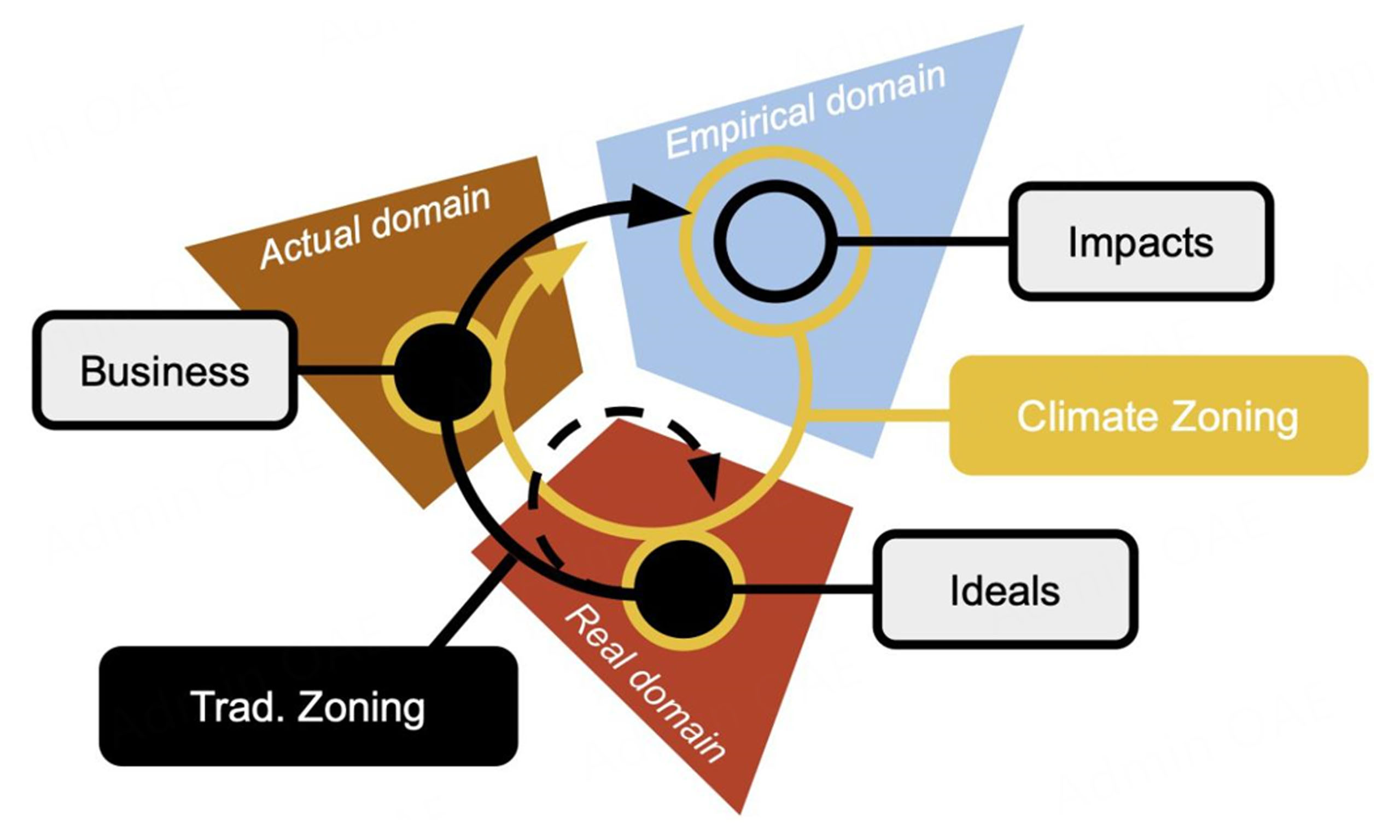

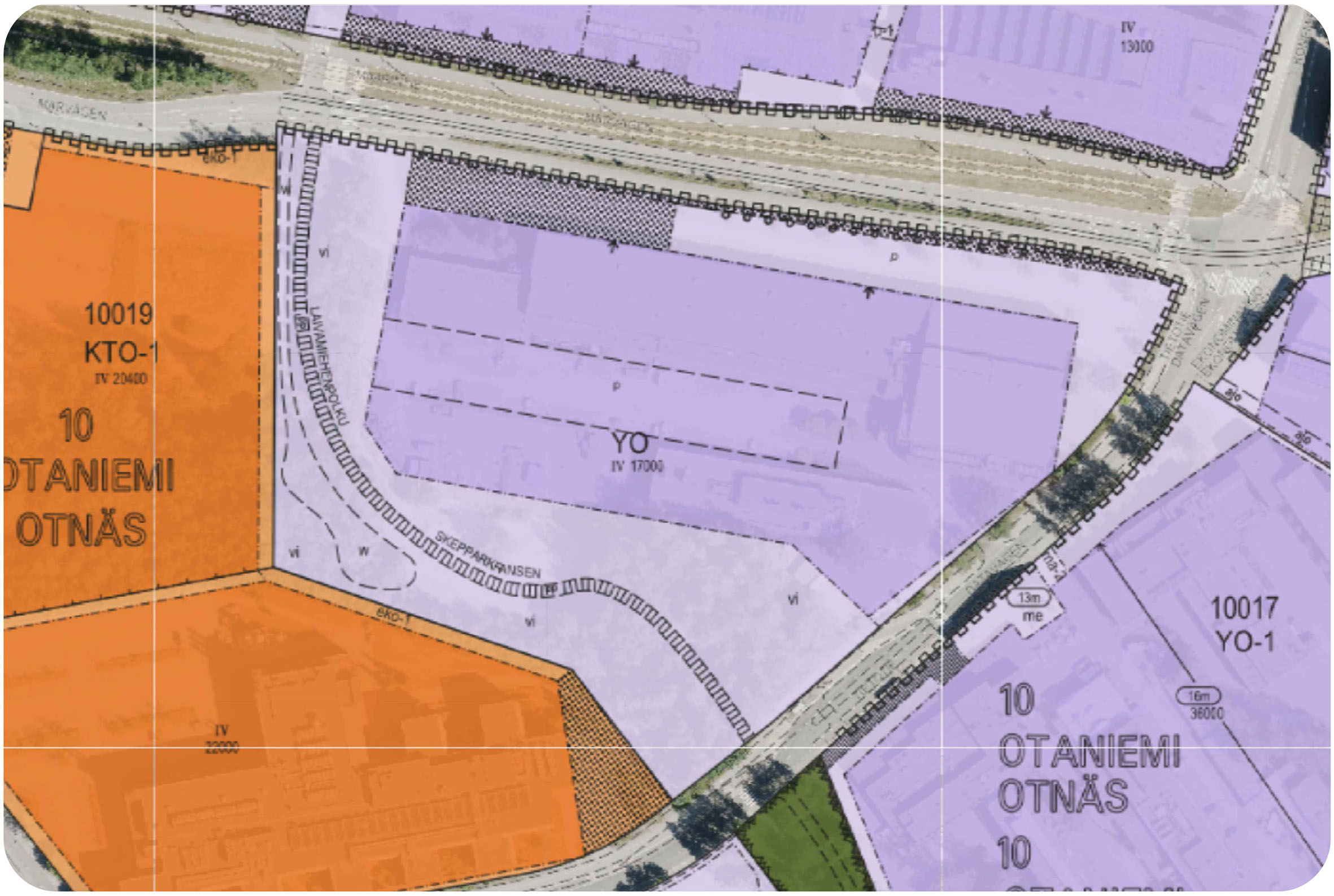
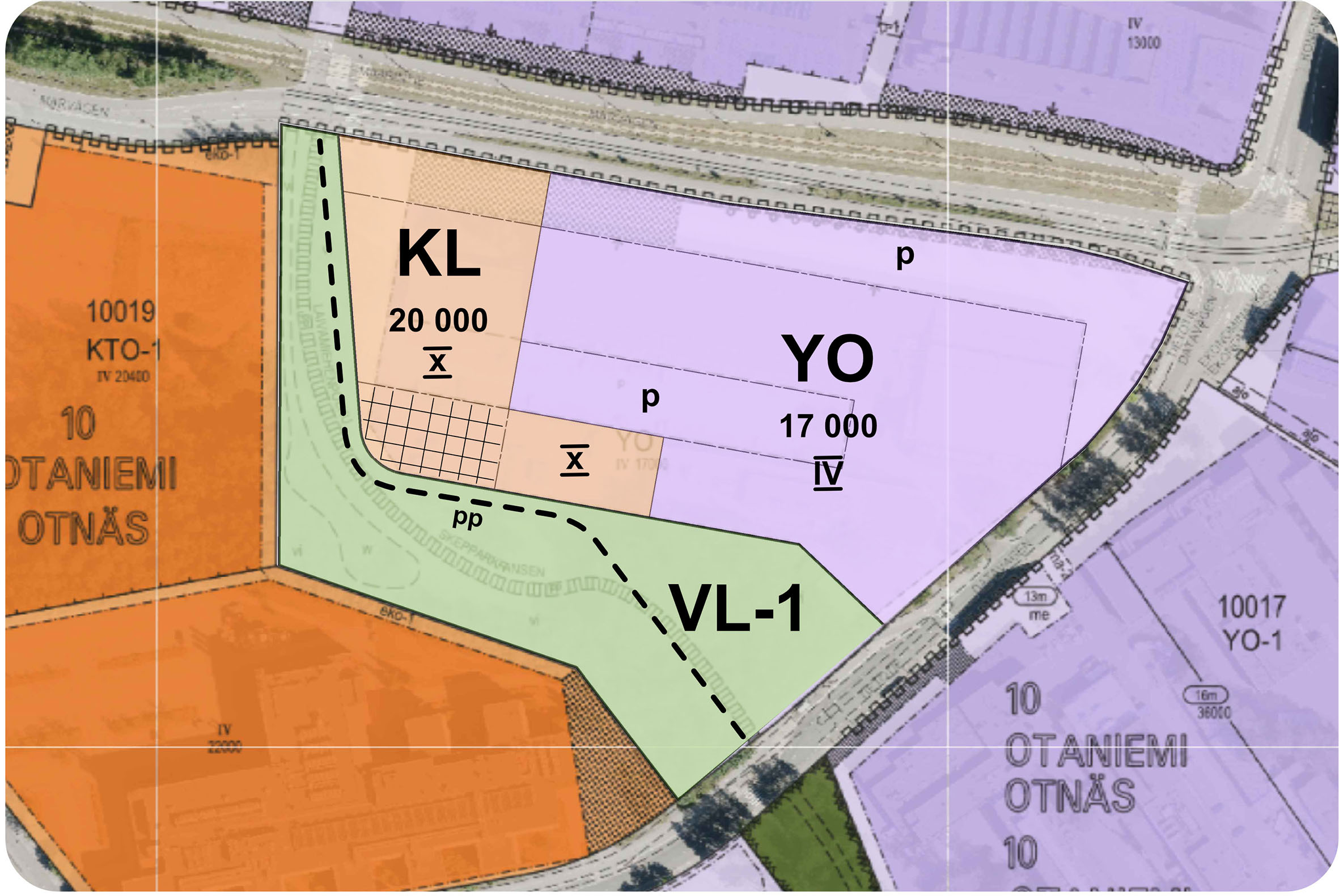
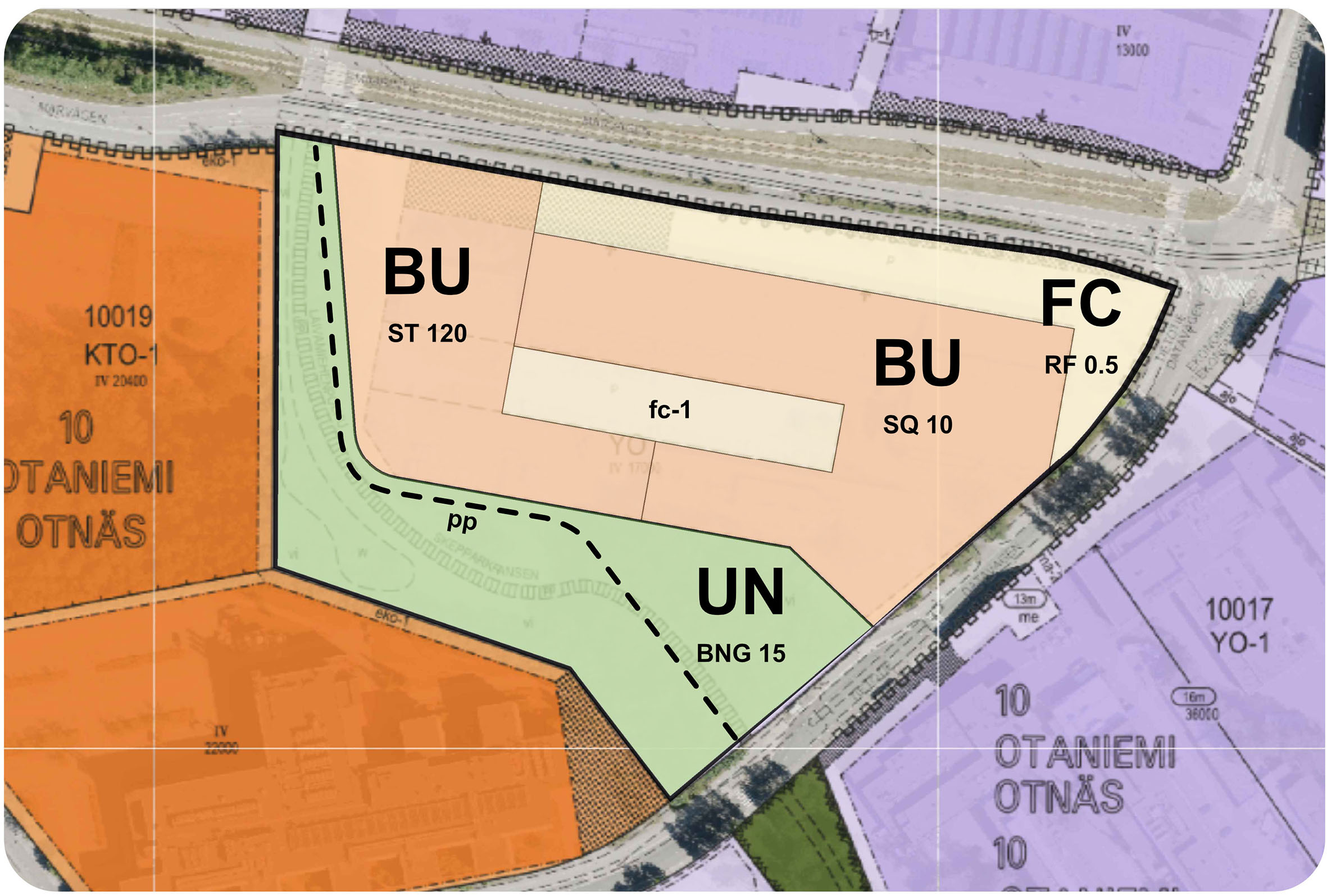
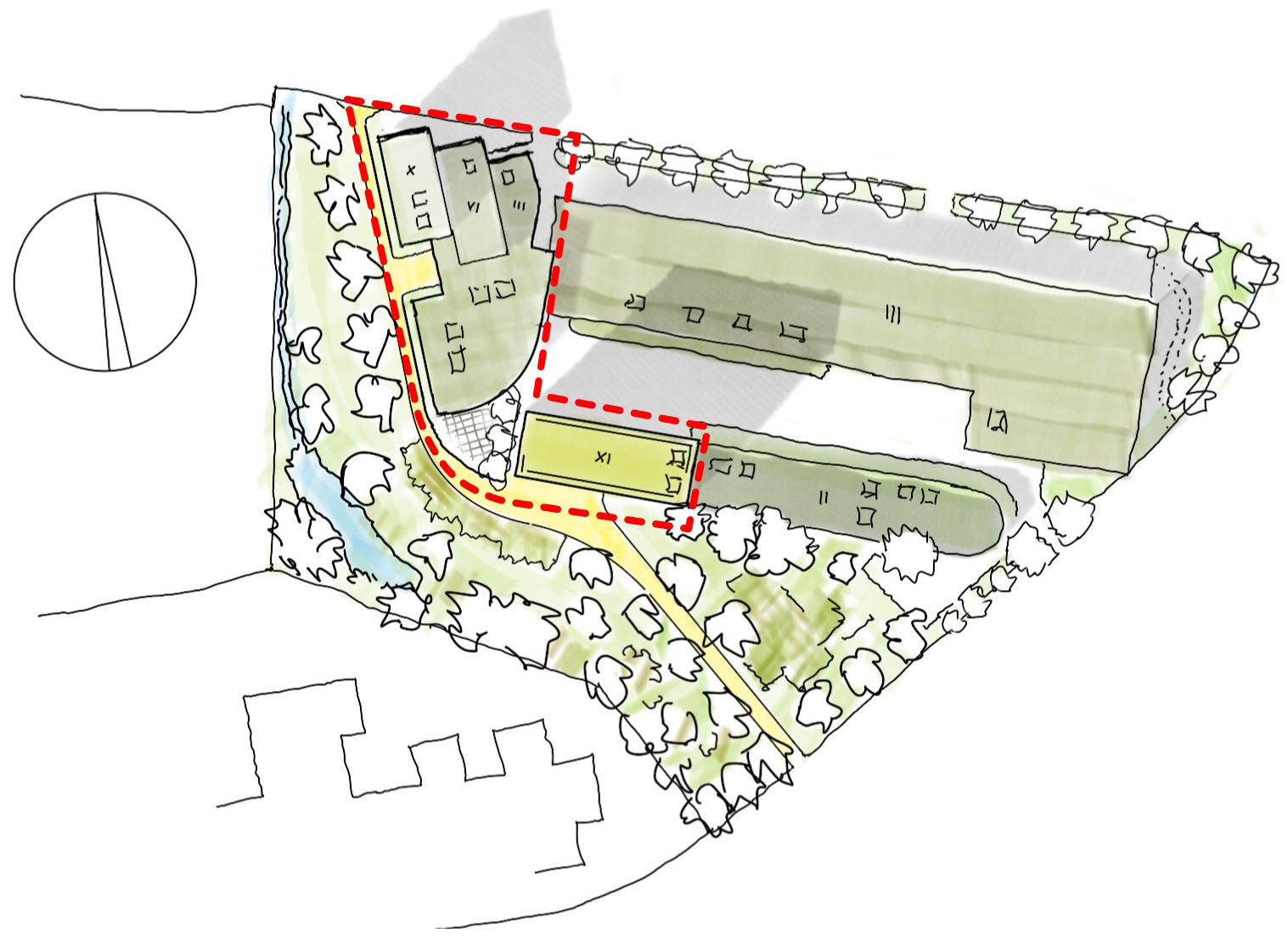












Comments
Comments must be written in English. Spam, offensive content, impersonation, and private information will not be permitted. If any comment is reported and identified as inappropriate content by OAE staff, the comment will be removed without notice. If you have any queries or need any help, please contact us at [email protected].